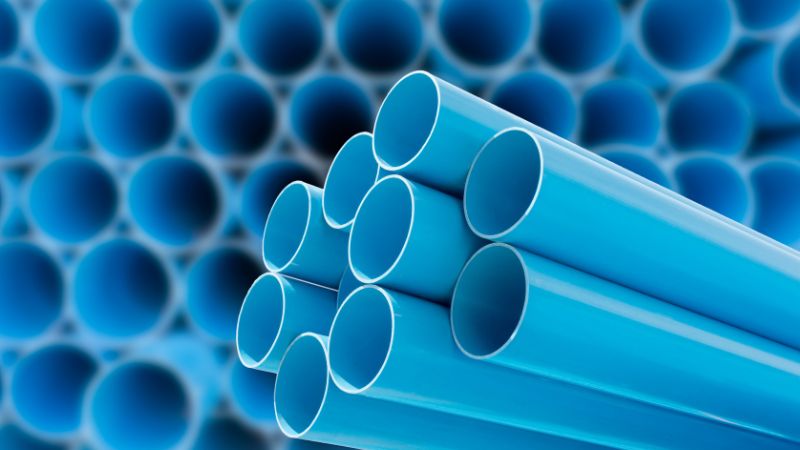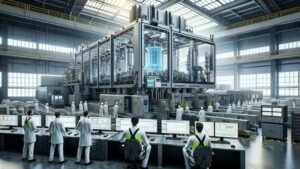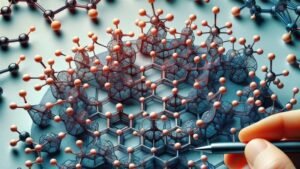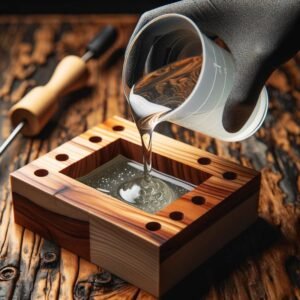Polyvinyl Chloride, or PVC for short, is a fascinating synthetic material that has become an indispensable part of our daily lives. From the pipes carrying water in our homes to the life-saving medical devices in hospitals, and even the electrical cables powering our devices, PVC plays a crucial role in countless applications. In this in-depth guide, we will explore the world of PVC, uncovering its origins, understanding its chemistry, discovering its different types, and diving into its numerous uses. We’ll also discuss the environment, health and safety aspects, as well as the future of this versatile material.
A Brief History of PVC
The story of PVC begins with a captivating history of discovery and innovation. Let’s take a quick journey back in time to explore how this incredible material came into existence.
Early Experiments with Vinyl Chloride: The roots of PVC can be traced back to the early 19th century when chemists started experimenting with vinyl chloride gas. However, progress was slow, and the true potential of this compound remained untapped for decades.
Emergence in the 20th Century: It wasn’t until the early 20th century that PVC began to take shape as a viable material. In 1912, Fritz Klatte, a German chemist, successfully polymerized vinyl chloride for the first time. But the resulting PVC was rigid and brittle, limiting its applications.
World War II and PVC’s Transformation: World War II marked a turning point for PVC. The demand for materials during the war led to research into improving PVC’s properties. In the 1940s, advances in polymerization techniques and the addition of plasticizers transformed PVC into a flexible and versatile material.
Post-War Boom: After the war, PVC experienced rapid growth. Its durability, chemical resistance, and affordability made it ideal for a wide range of applications. PVC pipes, in particular, revolutionized plumbing and construction.
Ongoing Innovation: Since its post-war boom, PVC has continued to evolve. Today, it is available in various forms, from rigid to flexible, and its formulations are constantly being refined for enhanced performance and sustainability.
The journey of PVC from a simple compound to a global commodity is a testament to human ingenuity and our ability to shape materials that, in turn, shape our world.

The Chemistry of PVC
To truly understand PVC, let’s dive into the world of chemistry. PVC’s unique properties and versatility are a result of its molecular structure and the chemical processes that create it.
The Chemical Composition: At its core, PVC is a polymer, which is a large molecule made up of repeating smaller units called monomers. For PVC, the monomer is vinyl chloride, a simple compound consisting of carbon, hydrogen, and chlorine atoms. Its chemical formula is C2H3Cl.
The Role of Chlorine: One of the defining characteristics of PVC is the presence of chlorine atoms within its structure. These chlorine atoms contribute significantly to PVC’s properties. Chlorine is electronegative, meaning it has a strong attraction for electrons. As a result, the presence of chlorine atoms in PVC makes it inherently flame-resistant and less likely to support combustion. This is a key reason why PVC is widely used in applications where fire safety is a concern, such as electrical wiring insulation. Additionally, chlorine atoms in PVC provide chemical resistance, making it highly resistant to many acids, bases, and chemicals.
Different Forms of PVC: PVC can take on different forms depending on the degree of polymerization and the addition of plasticizers and other additives. Rigid PVC, known as PVC-U, is robust and often used in construction for pipes, fittings, and window frames. Flexible PVC, referred to as PVC-P, is used for products like medical tubing and cable insulation.

Types and Grades of PVC
PVC comes in various types and grades, each tailored to specific applications. Let’s explore these classifications and their unique characteristics.
1. PVC-U (Unplasticized PVC):
- Properties: Rigid, excellent chemical resistance, high mechanical strength, flame-resistant, suitable for outdoor use.
- Applications: Water and sewage pipes, window frames, cable conduits, industrial tanks, and equipment.
2. PVC-P (Plasticized PVC):
- Properties: Flexible, good electrical insulation, resistant to oils and chemicals, flame-resistant, suitable for cold environments.
- Applications: Medical tubing, electrical cable insulation, inflatable structures (e.g., toys and air mattresses), flexible hoses, and curtains.
3. PVC-C (Chlorinated PVC):
- Properties: Excellent high-temperature resistance, superior chemical resistance, enhanced mechanical properties compared to PVC-U, flame-resistant.
- Applications: Chemical processing equipment, ventilation systems for corrosive environments, high-temperature pipes, and fittings.
4. Foamed PVC:
- Properties: Lightweight, low density, good insulation properties, weather-resistant, impact-resistant.
- Applications: Signage and advertising boards, display panels, model making, and interior decoration.
5. PVDC (Polyvinylidene Chloride):
- Properties: Exceptional barrier properties to gases and moisture, excellent chemical resistance, transparent, good heat resistance.
- Applications: Food packaging (e.g., Saran Wrap), coatings for blister packaging, protective layers for flexible films.
6. CPVC (Chlorinated Polyvinyl Chloride):
- Properties: Enhanced heat resistance compared to PVC-U, good chemical resistance, flame-resistant, strong mechanical properties, suitable for hot water distribution.
- Applications: Hot water pipes and fittings, fire sprinkler systems, chemical processing pipelines.
7. UPVC (Unplasticized Polyvinyl Chloride):
- Properties: Rigid, durable, excellent resistance to weathering and UV radiation, low maintenance, good dimensional stability.
- Applications: Roofing materials, gutters and downspouts, outdoor furniture, cladding, and siding.
These various types and grades of PVC offer designers and engineers the flexibility to choose the most suitable material for their specific applications, whether it’s for its chemical resistance, electrical properties, flexibility, or temperature resistance.

Properties of PVC
Polyvinyl Chloride (PVC) is renowned for its unique combination of properties, making it a versatile material with a wide range of applications. In this chapter, we’ll delve into the key physical and chemical properties that define PVC.
1. Durability: One of PVC’s standout features is its durability. It can withstand harsh environmental conditions, including exposure to sunlight, moisture, and chemicals, without significant degradation. This makes PVC a popular choice for outdoor and long-lasting applications.
2. Flame Resistance: PVC is inherently flame-resistant. It has a high ignition temperature and doesn’t readily support combustion. When exposed to flames, it tends to self-extinguish, which is a crucial safety feature. As a result, PVC is commonly used in construction, electrical wiring, and transportation where fire safety is a concern.
3. Chemical Resistance: PVC is highly resistant to many acids, bases, and chemicals. It doesn’t corrode or degrade when exposed to a wide range of substances, making it an ideal choice for chemical processing equipment, piping systems, and containers.
4. Electrical Insulation Properties: PVC is an excellent electrical insulator. It has low electrical conductivity, making it suitable for use in electrical wiring and cable insulation. Additionally, its flame resistance is advantageous in electrical applications where fire safety is paramount.
5. Mechanical Strength: Rigid PVC, in particular, exhibits impressive mechanical strength. It can withstand substantial loads and impacts, making it a valuable material in construction and structural applications.
6. Thermal Stability: PVC has good thermal stability, maintaining its properties at a wide range of temperatures. PVC-C, a chlorinated form of PVC, is especially known for its high-temperature resistance and can handle elevated temperatures compared to standard PVC.
7. Water Resistance: PVC is inherently waterproof, which is why it’s often used in plumbing and water distribution systems. It doesn’t corrode or weaken when exposed to water, making it a reliable choice for these applications.
8. Versatility: PVC’s versatility is a standout feature. By adjusting the formulation and processing methods, it can be transformed into rigid or flexible materials, tailored to suit specific applications. This adaptability is a key reason why PVC finds use in such a wide variety of industries.
9. Recyclability: PVC is recyclable, and efforts to improve its sustainability are ongoing. While there have been concerns about the environmental impact of PVC in the past, advancements in recycling and sustainable manufacturing practices are addressing these issues.
The unique properties of PVC make it a material of choice in numerous industries, from construction and healthcare to automotive and beyond. Its durability, flame resistance, chemical stability, and adaptability continue to make PVC a valuable asset in engineering and design.

Manufacturing Process of PVC
The journey of Polyvinyl Chloride (PVC) from its raw materials to the versatile material we know today is a fascinating one. In this chapter, we’ll uncover the manufacturing processes involved in producing PVC and how they shape its properties.
1. Polymerization: The journey of PVC begins with the polymerization of vinyl chloride monomers. This process involves connecting the vinyl chloride molecules together to form long chains. There are several methods of polymerization used in PVC production:
- Suspension Polymerization: This method involves suspending vinyl chloride droplets in water and then initiating the polymerization process with heat and a catalyst.
- Emulsion Polymerization: Here, vinyl chloride is polymerized in an aqueous emulsion, creating a latex material.
- Bulk Polymerization: In this method, vinyl chloride is polymerized in a pure, undiluted form.
2. Resin Production: The resulting polymer, often referred to as PVC resin, undergoes further processing. During this stage, additives are introduced to enhance specific properties. Common additives include plasticizers to make the PVC flexible, stabilizers to prevent degradation, pigments for coloration, and fillers to improve strength and reduce cost.
3. Mixing and Compounding: The PVC resin is mixed with additives in precise proportions using high-speed mixers. This process ensures that the additives are uniformly distributed throughout the PVC matrix.
4. Extrusion or Molding: The PVC compound is then fed into an extruder or molding machine, where it is heated and shaped into the desired form. Extrusion is used for products like pipes, profiles, and sheeting, while molding is employed for more intricate designs.
5. Cooling and Cutting: After extrusion or molding, the PVC products are cooled to set their shape. They may also be cut to the desired length or shape.
6. Quality Control: Quality control measures are integral to PVC manufacturing. Products are subjected to various tests to ensure they meet industry standards for properties such as dimensional accuracy, tensile strength, and chemical resistance.
7. Packaging and Distribution: Once the PVC products pass quality control, they are packaged and distributed to their intended markets and industries.
The manufacturing of PVC is a highly controlled process that allows for the customization of PVC products to meet specific requirements. The choice of additives, polymerization method, and processing conditions all play a role in shaping the final properties of PVC.
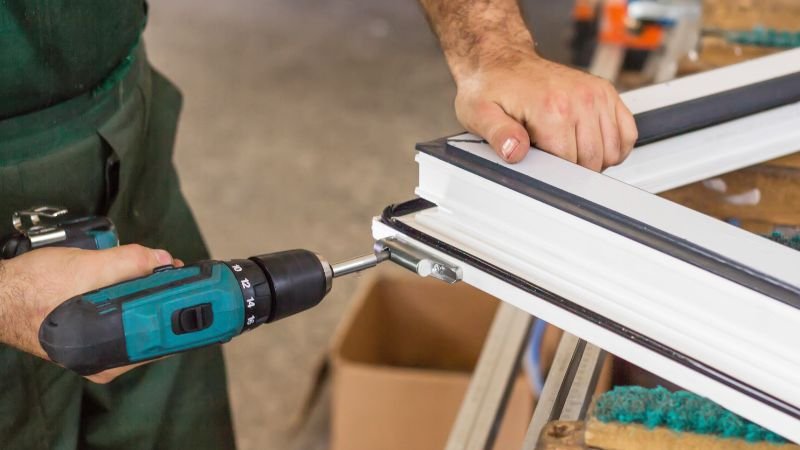
Applications of PVC
Polyvinyl Chloride (PVC) has established itself as a material of exceptional versatility, finding applications in a wide array of industries. Its unique combination of properties makes it indispensable in various contexts. In this chapter, we will explore the diverse and vital roles PVC plays in our daily lives.
1. Construction Industry:
- Pipes and Fittings: PVC pipes are widely used for water distribution, drainage, and sewage systems. They are lightweight, corrosion-resistant, and have a long service life.
- Window Frames: PVC’s insulating properties make it a popular choice for window frames. It helps improve energy efficiency and reduces heating and cooling costs.
- Profiles and Siding: PVC profiles are used for doors, frames, and siding due to their resistance to weathering, termite damage, and decay.
2. Healthcare Sector:
- Medical Tubing: Flexible PVC is used for medical tubing, such as intravenous (IV) lines, catheters, and oxygen delivery systems due to its biocompatibility and flexibility.
- Medical Packaging: PVC is used in the packaging of pharmaceuticals and medical devices, providing a barrier against contamination.
3. Automotive Applications:
- Automotive Interiors: PVC is used in car interiors for dashboard covers, seating materials, and floor coverings due to its durability and ease of maintenance.
- Wiring and Cabling: PVC is employed in automotive wiring insulation, where its electrical insulation properties are critical.
4. Electrical and Electronics:
- Cable Insulation: PVC is used to insulate electrical cables, ensuring the safe transmission of electricity.
- Wire Coatings: It is used for wire coatings, protecting against wear and environmental factors.
5. Signage and Graphics:
- Vinyl Signage: PVC-based vinyl sheets are used for advertising signs, banners, and decals due to their durability and ability to hold vibrant prints.
6. Packaging and Consumer Goods:
- Blister Packaging: PVC is used in blister packaging for pharmaceuticals and consumer goods due to its transparency and barrier properties.
- Stationery and Toys: PVC is used for stationery items, toys, and inflatable products due to its ease of molding and flexibility.
7. Agriculture:
- PVC pipes and fittings are widely used in agriculture for irrigation systems and water distribution on farms.
8. Miscellaneous Applications:
- Footwear: PVC is used in the production of footwear, including rain boots and sandals, due to its water-resistant properties.
- Sports Equipment: It is used for items like sports balls and inflatable structures.
- Marine and Watercraft: PVC is employed in marine applications such as inflatable boats and buoys due to its buoyancy and resistance to saltwater.
The remarkable versatility of PVC is on full display in the numerous roles it plays across various industries. From enhancing the safety and comfort of our homes to contributing to advancements in healthcare and transportation, PVC continues to evolve and innovate, ensuring that it remains an essential material in our modern world.

Environmental Considerations
As we explore the world of Polyvinyl Chloride (PVC), it’s essential to consider the environmental impact of this versatile material. PVC has faced scrutiny and debate over the years due to its production processes and potential environmental effects. In this chapter, we’ll examine both the concerns and the sustainability efforts within the PVC industry.
1. Production and Chlorine Gas Emissions:
One of the primary environmental concerns associated with PVC production is the release of chlorine gas. During the manufacturing process, especially in the early stages of PVC production, chlorine gas is produced as a byproduct. Chlorine is a highly reactive and potentially hazardous gas, and its emissions have raised environmental concerns. However, it’s important to note that significant advancements have been made in PVC production technology. Modern facilities have implemented measures to capture and neutralize chlorine emissions, reducing their environmental impact.
2. PVC Recycling:
PVC is recyclable, but it presents some challenges compared to other plastics. One challenge is the presence of various additives in PVC products, which can complicate the recycling process. To address this, recycling programs for PVC have improved over the years, making it increasingly viable and environmentally friendly.
3. Life Cycle Analysis:
The environmental impact of PVC is highly dependent on its life cycle. Factors such as production, transportation, use, and disposal all contribute to the overall environmental footprint of PVC products. Life cycle analysis is a valuable tool for assessing these impacts and identifying areas for improvement.
4. Phthalates and Health Concerns:
Phthalates are a group of chemicals sometimes used as plasticizers in PVC formulations. There have been concerns about the potential leaching of phthalates from PVC products, particularly in toys and medical devices. To address these concerns, there is a trend toward developing phthalate-free PVC formulations.
5. Dioxins and Incineration:
The production and incineration of PVC can result in the release of dioxins, highly toxic compounds. Stringent regulations and improved production processes have significantly reduced dioxin emissions. Proper waste management and recycling efforts are essential to minimize the environmental impact of incinerated PVC.
Polyvinyl Chloride (PVC) is a versatile material with a complex set of environmental considerations. While challenges exist, the PVC industry has made substantial progress in addressing environmental concerns. Innovations in production technology, recycling practices, and the development of more sustainable PVC formulations all contribute to reducing the environmental impact of PVC.
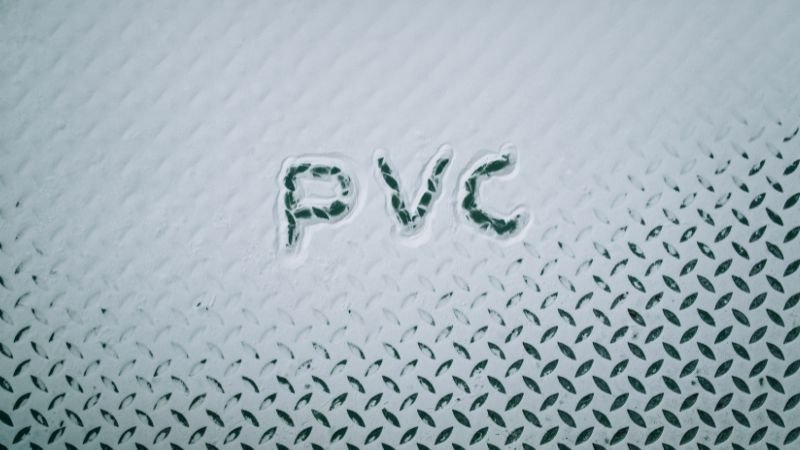
Advantages and Potential Drawbacks of PVC
Polyvinyl Chloride (PVC) is a material with a rich history and an impressive array of applications. In this chapter, we’ll examine both the advantages that have propelled PVC to prominence and the potential drawbacks that have sparked debates and led to continuous improvements.
Advantages of PVC
- Versatility: PVC is incredibly versatile, and its properties can be tailored to suit various applications. From rigid PVC used in construction to flexible PVC in medical devices, it can be adapted to meet specific needs.
- Durability: PVC is renowned for its durability and long service life. It can withstand harsh environmental conditions, making it ideal for outdoor applications.
- Flame Resistance: PVC’s inherent flame resistance and self-extinguishing properties make it a safe choice in applications where fire safety is a concern.
- Chemical Resistance: PVC is highly resistant to many acids, bases, and chemicals, ensuring its longevity in corrosive environments.
- Electrical Insulation: It is an excellent electrical insulator, making it suitable for wiring and cable insulation.
- Cost-Effective: PVC is often cost-effective compared to alternative materials, which contributes to its widespread use in various industries.
Potential Drawbacks of PVC
- Chlorine Production: The production of PVC involves the use of chlorine gas, which has raised environmental concerns. While emissions have been significantly reduced through improved technology, this remains a point of debate.
- Environmental Impact: PVC’s environmental impact depends on various factors, including its life cycle. Concerns include the disposal of PVC products and the potential for toxic emissions if incinerated.
- Health Concerns: Some studies have raised health concerns related to PVC, particularly regarding the release of phthalates and dioxins during manufacturing or disposal. These concerns have led to efforts to develop phthalate-free and more environmentally friendly formulations.
- Recycling Challenges: While PVC is recyclable, it presents challenges in recycling due to the presence of various additives. Separating PVC from other plastics can be complex, but recycling programs are continually improving.
- Stiffness and Brittleness: Rigid PVC can be brittle at low temperatures, which may limit its use in extreme cold conditions.
The use of PVC involves a trade-off between its advantages and potential drawbacks. Industry professionals, policymakers, and consumers must consider these factors when choosing PVC for specific applications. Advances in technology, recycling, and sustainability initiatives within the PVC industry aim to address environmental and health concerns, further enhancing its value.
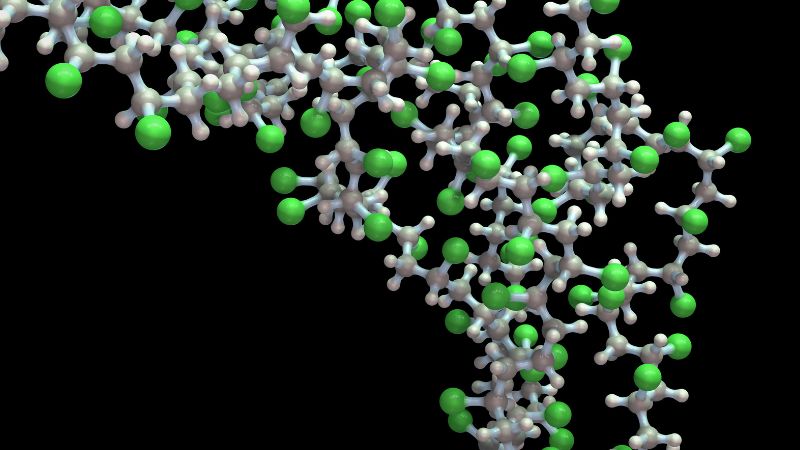
Safety and Health Considerations
The safety and health aspects of Polyvinyl Chloride (PVC) are crucial considerations, especially given its widespread use in various industries. In this chapter, we’ll delve into the safety measures, regulations, and potential health concerns associated with PVC.
Safety Measures in PVC Handling
- Respiratory Protection: When working with PVC in manufacturing or processing environments, workers may need to use respiratory protection, such as masks or respirators, to avoid inhaling airborne particles or fumes.
- Skin Protection: Protective clothing, gloves, and safety glasses or goggles are recommended to minimize skin contact and eye exposure to PVC materials, particularly during cutting, grinding, or welding processes.
- Ventilation: Adequate ventilation systems are crucial to control and remove any potential emissions or fumes generated during the PVC production process.
- Handling and Storage: PVC materials should be handled and stored according to manufacturer recommendations to minimize the risk of physical injury and ensure safe storage conditions.
Regulations and Standards
- Occupational Safety and Health Administration (OSHA): OSHA in the United States sets workplace safety regulations that may apply to the handling and use of PVC. Employers are responsible for ensuring compliance with these regulations to protect their employees.
- Environmental Regulations: Environmental agencies in various countries regulate the emissions and disposal of PVC-related materials, particularly concerning the release of chlorine gas and potential environmental impacts.
Health Concerns
- Chlorine Gas Exposure: One of the primary health concerns associated with PVC is the potential release of chlorine gas during production or in the event of a fire. Chlorine gas exposure can cause respiratory and eye irritation, and in high concentrations, it can be toxic.
- Phthalates: Phthalates are a group of chemicals sometimes used as plasticizers in PVC formulations. There have been health concerns regarding the release of phthalates from PVC products, particularly in toys and medical devices. As a result, there is a trend toward developing phthalate-free PVC formulations.
- Dioxins: The production and incineration of PVC can result in the release of dioxins, which are highly toxic compounds. Stringent regulations and improved production processes have reduced dioxin emissions, but monitoring and control are ongoing concerns.
PVC in Healthcare
In healthcare, PVC is widely used for medical devices and packaging. The safety of PVC in medical applications is a subject of scrutiny. Efforts are made to ensure that PVC medical products meet regulatory standards and minimize potential health risks to patients.
Safety and health considerations are paramount in the use of PVC, especially in industries where workers or consumers may come into contact with PVC materials. Strict adherence to safety measures, compliance with regulations, and ongoing research into potential health concerns are essential to ensure the safe use of PVC in various applications.
The Future of PVC – Innovation and Sustainability
Polyvinyl Chloride (PVC) has come a long way since its discovery, evolving into a versatile material with diverse applications. As we look to the future, several key trends and developments are poised to shape the role of PVC in our world.
1. Sustainable Practices and Circular Economy
The PVC industry is actively working to enhance sustainability and reduce environmental impacts. Here’s how:
- Recycling Initiatives: Recycling programs for PVC continue to expand. The recycling of PVC materials not only conserves resources but also helps reduce waste in landfills.
- Phthalate-Free Formulations: There’s a growing shift towards developing and using phthalate-free PVC formulations, addressing health concerns and aligning with consumer preferences for safer products.
- Biodegradable Additives: Research is underway to incorporate biodegradable additives into PVC formulations, allowing PVC products to break down more readily at the end of their life cycle.
- Green Chemistry: The development of more environmentally friendly PVC production processes and additives is a focus of ongoing research.
2. Technological Innovations
Advancements in PVC technology are opening up new possibilities:
- Smart PVC Materials: Innovations in PVC additives and composites are enabling the development of “smart” materials with enhanced properties, such as self-healing capabilities and improved electrical conductivity.
- Nanotechnology: The incorporation of nanomaterials into PVC formulations is enhancing performance characteristics, making PVC even more adaptable and efficient.
3. Regulatory Compliance
As concerns about environmental and health impacts persist, regulatory standards and industry certifications are expected to become more stringent. PVC manufacturers are likely to invest in meeting these standards to ensure the safety and sustainability of their products.
4. Global Expansion
PVC’s versatility and cost-effectiveness make it a valuable material in emerging economies. As infrastructure development and urbanization continue to grow worldwide, the global demand for PVC is expected to rise, particularly in construction and healthcare applications.
5. Sustainable Building Practices
In the construction industry, there’s a growing focus on sustainable building practices. PVC products, such as energy-efficient windows and PVC roofing membranes, contribute to energy conservation and sustainability, aligning with the green building movement.
Polyvinyl Chloride (PVC) has a promising future, driven by ongoing efforts to improve sustainability, safety, and performance. The PVC industry is committed to addressing environmental concerns, reducing its carbon footprint, and embracing technological innovations.
As PVC continues to adapt to changing demands and regulations, it will likely remain a vital material in a wide range of industries. Its versatility, durability, and cost-effectiveness ensure that PVC will play a significant role in shaping our world, both now and in the future.
Conclusion: PVC – A Versatile Material Shaping Our World
In the grand tapestry of materials that weave our modern world, Polyvinyl Chloride (PVC) stands as a remarkable thread. From its humble origins as an experiment with chlorine gas and vinyl chloride, PVC has evolved into a versatile, durable, and adaptable material that touches nearly every aspect of our lives.
As we’ve journeyed through the chapters of this comprehensive guide, we’ve witnessed PVC’s journey from its inception to its pivotal role in construction, healthcare, automotive, and countless other industries. We’ve explored its unique chemistry, its wide array of types and grades, and the remarkable properties that make it indispensable. We’ve discussed its environmental considerations, advantages, potential drawbacks, and the ongoing efforts to make it more sustainable and safe.
PVC is more than just a material, it’s a testament to human ingenuity and innovation. It reflects our ability to harness the elements and engineer solutions that enhance our quality of life. PVC has not only shaped our world but continues to do so, thanks to ongoing research, development, and the commitment of industries and individuals to use it responsibly.
As we look to the future, PVC is set to evolve further, embracing sustainability, innovation, and compliance with stringent regulations. It will continue to adapt to meet the needs of a changing world, contributing to our safety, comfort, and progress.
So, whether it’s the PVC pipes carrying clean water to our homes, the flexible PVC tubing saving lives in medical settings, or the durable PVC window frames enhancing energy efficiency, PVC remains an integral part of the fabric of our modern society.
As we bid farewell to this exploration of PVC, we invite you to stay curious, to keep innovating, and to appreciate the myriad ways in which materials like PVC shape the world around us. The journey of discovery never ends, and the story of PVC is far from over.

